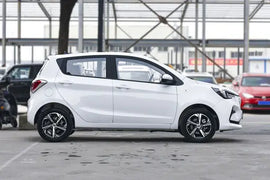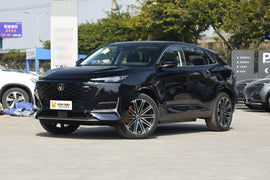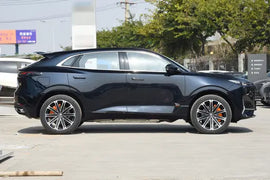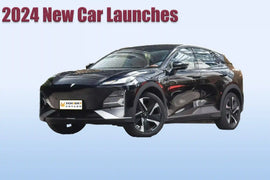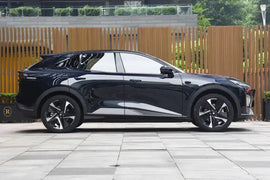
2025 China Auto Market Insights: Top 5 Trends & Models Global Buyers Can’t Miss
(Updated April 3, 2025)
China’s automotive market is reshaping the global industry at a staggering pace. From electrification to intelligence, luxury to affordability, Chinese brands are capturing worldwide attention through innovation and strategic positioning. Here are the hottest trends and models international buyers should watch:

1. Electrification Surge: Affordable Meets Luxury, Led by Chinese Innovators
China’s new energy vehicle (NEV) adoption rate has surpassed 50%, creating a "dumbbell-shaped" market dominated by budget EVs (¥50,000-100,000) and premium smart cars (¥200,000+).
- BYD Seagull: Priced at ~$13,000 (¥73,800 in China), this weekly sales champion (7,718 units) leverages Blade Battery and DM-i hybrid tech to dominate the global budget EV race.
- Zunjie S800: A Huawei-JAC ultra-luxury EV sedan (¥1M+), featuring Level 3 autonomy and HarmonyOS cockpit, redefining electric opulence.
- Tesla Model Y Facelift: With 4680 battery boosting range to 719 km (CLTC) and pricing slashed to ¥250,000, it leads premium EV sales (8,682 weekly units).
Global Takeaway: BYD’s vertically integrated supply chain slashes battery costs to record lows, while EU tariffs (e.g., 35.3%) may push Chinese brands to localize production overseas.

2. Intelligence Wars: From ADAS to AGI-Driven Mobility
2025 marks the "Year of Smart Driving," with tech features defining competitiveness:
- XPeng MONA M03: A ¥100,000-150,000 sedan with Orin-X chip and urban NOA (5,648 weekly sales), proving autonomous tech can be affordable.
- Li Auto L6: The hybrid SUV king uses self-developed AGI for Level 4 autonomy and multimodal AI (vision-language-action models).
- Huawei Harmony Smart Drive: Aito M9 and others boost test drives by 2.1x via Huawei stores, revolutionizing "software-defined" sales.
Tech Edge: Chinese brands now lead in chips and algorithms—BYD plans high-speed NOA for 60-70% of models, even in the ¥100,000 segment.

3. Design Renaissance: From Followers to Global Trendsetters
Chinese cars are shedding "Tesla clone" stereotypes with bold aesthetics:
- Xiaomi YU7: Ferrari Purosangue-inspired electric coupe SUV (20,000 pre-orders) targets young elites.
- Zeekr 007GT: Shooting brake styling + 800V architecture (870 km range) wins over Gen Z with 65% customization rate.
- Denza Speedster: BYD’s luxury sub-brand revives classic roadster design (hardtop/convertible), debuting at 2025 Shanghai Auto Show.
Global Expansion: NIO’s sub-¥150,000 Firefly targets Europe’s compact market, while Lynk & Co’s 900 SUV (SPA Evo platform) eyes global premium families.

4. Hybrid Dominance: Solving Range Anxiety with Tech
Plug-in hybrids (PHEV) outpace pure EVs, offering fuel flexibility:
- BYD 5th-gen DM: 46% thermal efficiency + 200 km pure EV range (Tang L flagship).
- Li Auto L-Series: Extended-range tech balances city EV use and long-distance travel (L6 weekly sales: 3,353 units).
- Geely Thunder Hybrid: 44.26% efficiency (3.8L/100km) now licensed to global automakers.
Market Shift: Hybrids rose from 30% to 40% of NEV sales in 2024, poised to challenge pure EVs further in 2025.

5. Global Playbook: From Exports to Localized Ecosystems
China’s automakers pivot from trade to tech-capacity-brand synergies:
- BYD Mexico: 150,000-unit/year factory to bypass U.S. 100% tariffs.
- Leapmotor-Stellantis: Light-asset EU production taps Stellantis’s distribution.
- Chery’s “Reverse JV”: Spain-made EVs sidestep EU trade barriers (81,000 exports in 2024).
Data Spotlight: Jan 2025 saw 150,000 NEV exports (+49.6% YoY), with BYD alone shipping 70,000 (+91.5%).
Tips for Global Buyers
- Policy Savvy: Opt for locally built Chinese EVs (e.g., BYD Mexico) to avoid tariff spikes.
- Test-Drive Tech: Prioritize voice/AI features (MIUI, HarmonyOS) surpassing legacy brands.
- Hybrid Hedge: Choose PHEVs if charging infrastructure lags.
China’s auto revolution is rewriting global rules—whether in tech, design, or strategy. For value, innovation, and style, Chinese brands are no longer Plan B but Plan A.



